Frank Gehry designs buildings with curved metal facades, irregular forms and experimental construction methods. His work defines urban spaces from Bilbao to Los Angeles. The exterior surfaces use titanium, steel or glass formed into wave-like or folded volumes. The interior spaces accommodate art collections, concert halls and commercial offices. The Guggenheim Museum in Bilbao displays titanium panels that reflect the light of the Basque coast. The Walt Disney Concert Hall in Los Angeles combines stainless steel surfaces with wooden acoustics for the Los Angeles Philharmonic. The Vitra Design Museum in Weil am Rhein demonstrates his early approaches with white stucco surfaces and angled walls. The buildings emerge through computer-aided design that translates complex geometries into buildable structures.

Bilbao, Spain
The Guggenheim Museum Bilbao was completed in 1997 according to Frank Gehry's designs and stands on the banks of the Nervión River. The facade consists of over 33,000 titanium plates that create different reflections depending on the light conditions. The museum spans 24,000 square meters of exhibition space and presents modern and contemporary artworks by international artists. The architecture combines organic forms with industrial materials and has contributed to the urban renewal of Bilbao.
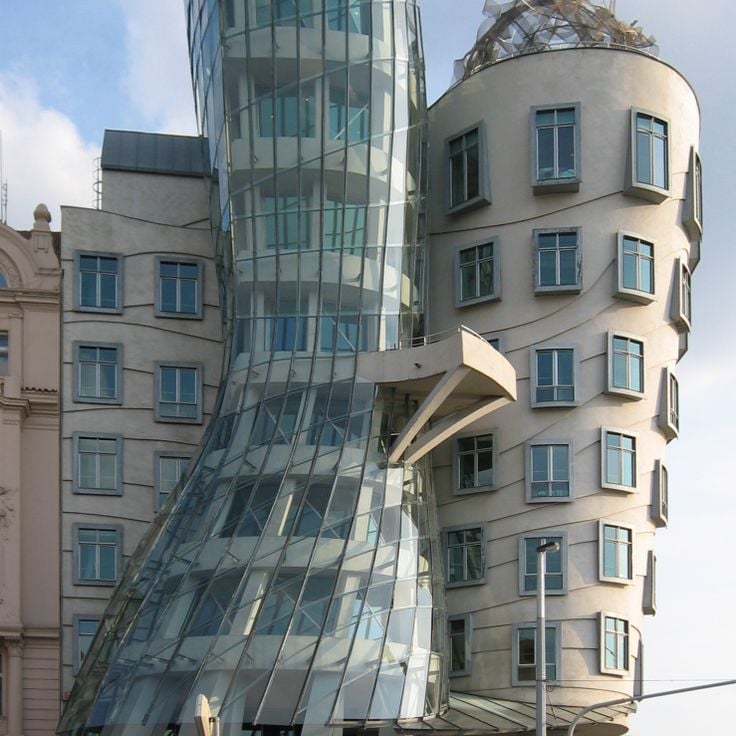
Prague, Czech Republic
The Dancing House was designed by Frank Gehry and Vlado Milunić between 1992 and 1996. The building consists of two towers with different construction: a glass cylinder and a concrete tower with irregular windows. The curved glass and steel facade creates a dynamic form. The Dancing House contains offices, a rooftop restaurant, and a gallery space. It stands at the corner of Rašínovo nábřeží and Jiráskovo náměstí along the Vltava River embankment.
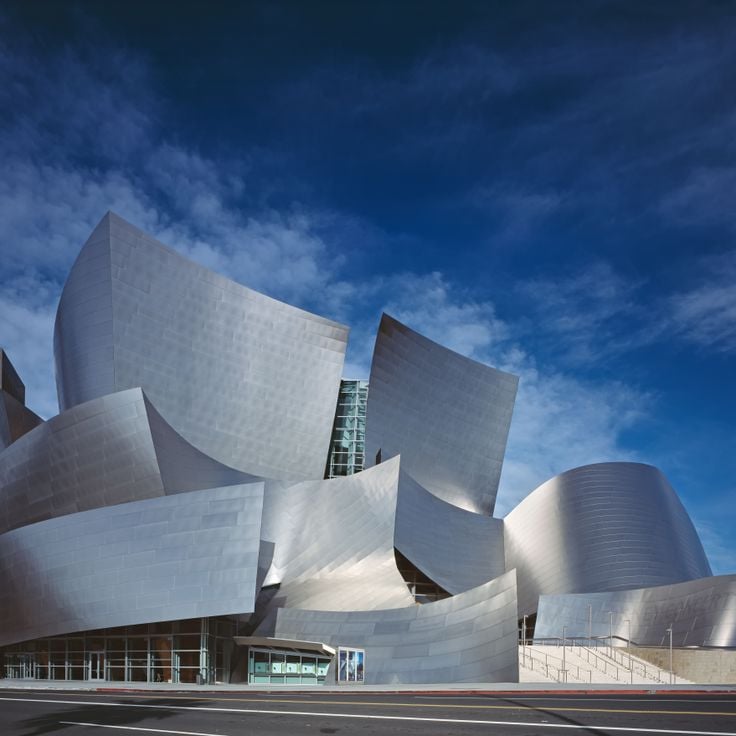
Los Angeles, USA
The Walt Disney Concert Hall was completed in 2003 and serves as home to the Los Angeles Philharmonic Orchestra. The curved exterior surfaces of polished stainless steel define the downtown Los Angeles skyline. The main concert hall seats 2265 people and was designed according to acoustic principles based on designs by Yasuhisa Toyota. The interior spaces are clad in Douglas fir wood, which contributes to sound quality. The building also includes smaller performance spaces and public areas.

Weil am Rhein, Germany
The Vitra Design Museum was completed in 1989 as Frank Gehry's first building in Europe. The museum hosts rotating exhibitions on furniture design, architecture and contemporary design. The white facade features curved forms and slanted walls that demonstrate Gehry's deconstructivist style. The collection includes furniture pieces and design objects from the 19th century to the present day. The building is located on the Vitra Campus, where several architects have realized their structures.
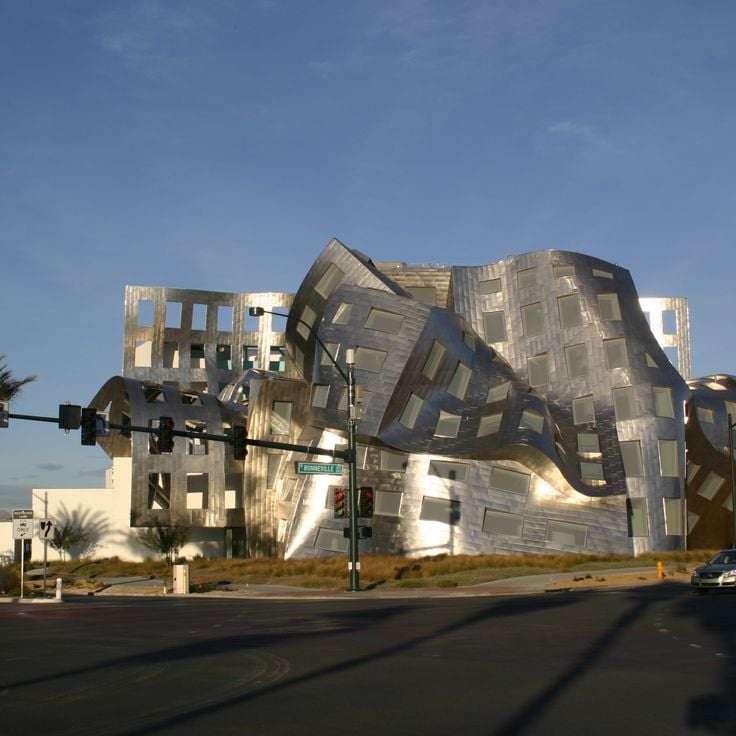
Las Vegas, USA
The Lou Ruvo Center for Brain Health is a medical research building completed in 2010. The structure comprises two main sections: a functional rectangular area for clinical spaces and a sculptural tower of bent stainless steel and glass. The undulating metal facade creates asymmetrical forms that challenge traditional architectural geometry. The center serves as a facility for neurological research and patient care.

Herford, Germany
MARTa Herford opened in 2005 and presents contemporary art and design. The building connects traditional red brick walls with a curved stainless steel roof and large glass surfaces. The architecture creates a dialogue between historical building fabric and modern elements. The asymmetrical forms and dynamic structure characterize this museum in the East Westphalian city.
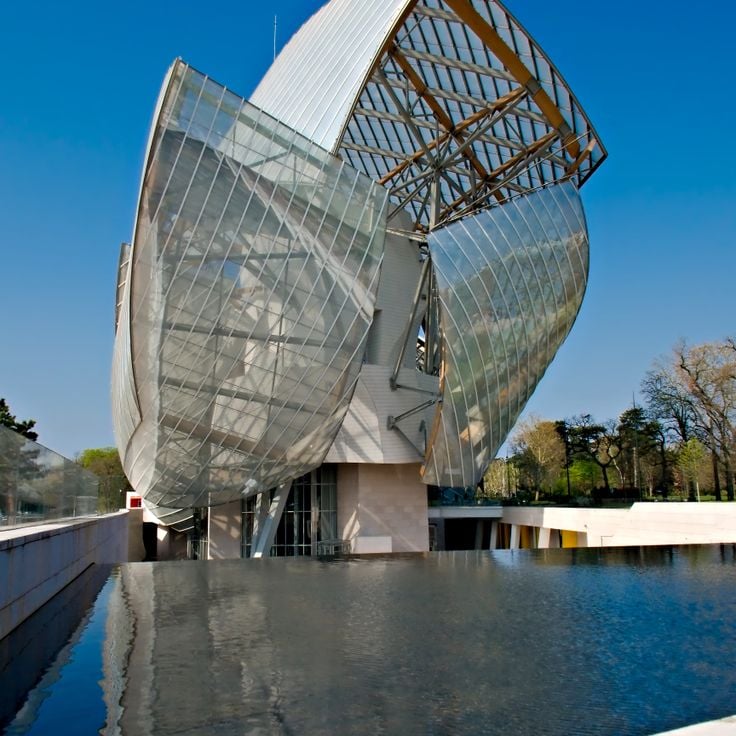
Paris, France
The Fondation Louis Vuitton is an art museum located in the Bois de Boulogne, opened in 2014. The building comprises twelve curved glass sails that rise above a white concrete core, covering an area of 11,000 square meters. The transparent panels made of 3,600 glass plates allow changing light effects inside the exhibition spaces. The museum displays contemporary art and modern art collections across eleven galleries distributed on different levels.
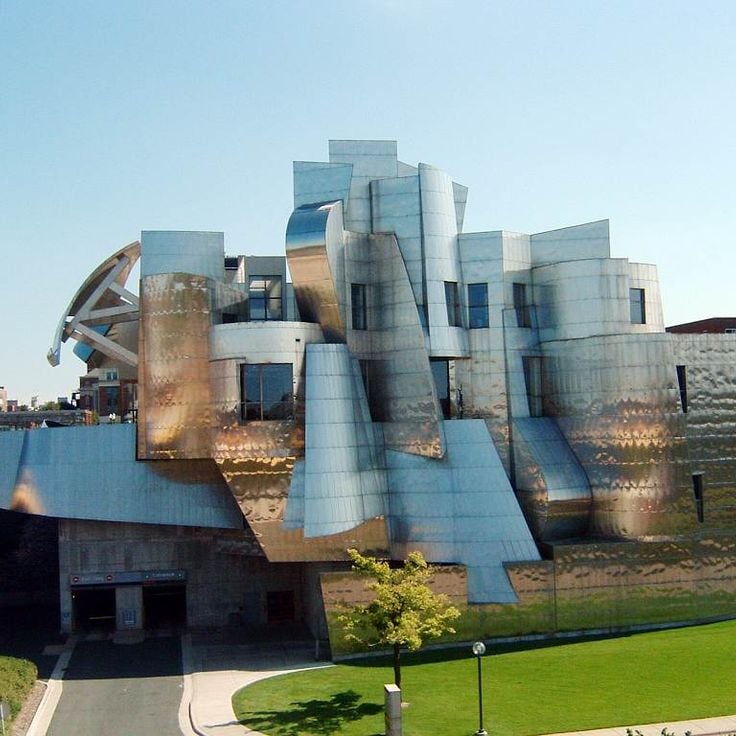
Minneapolis, USA
The Weisman Art Museum displays a distinctive exterior facade of stainless steel with geometric forms. The building stands on the banks of the Mississippi River and was designed by Frank Gehry. The reflective metal surface changes its appearance depending on light conditions and time of day. The asymmetrical architecture combines different geometric elements into a cohesive structure. The museum houses collections of 20th-century American art.
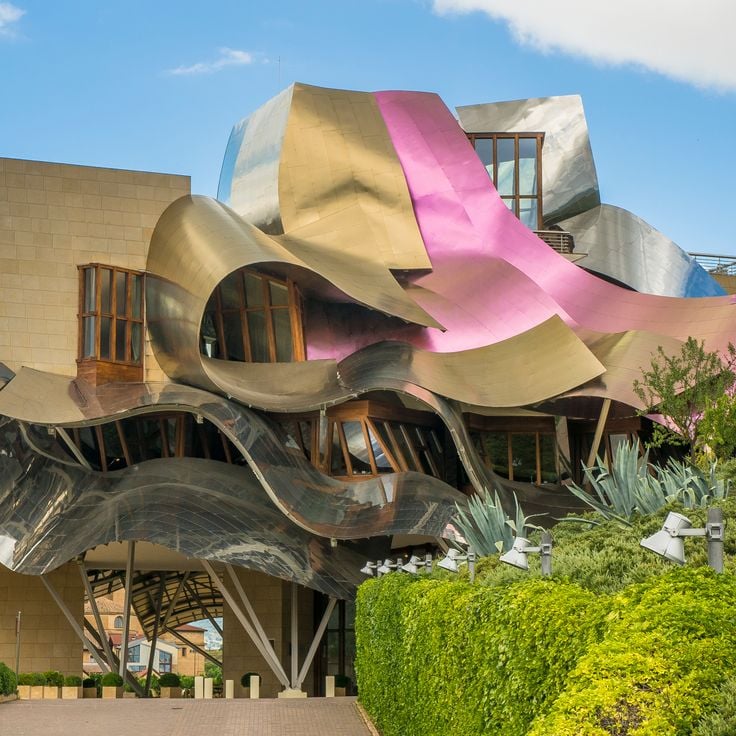
Elciego, Spain
The Hotel Marqués de Riscal rises above the historic wine cellars of the Rioja region. The curved titanium structures in red, silver, and gold form a contrast with the surrounding wine landscape. The building integrates a luxury hotel with spa facilities and a restaurant. The undulating metal facades reflect light and create changing visual effects throughout the day.
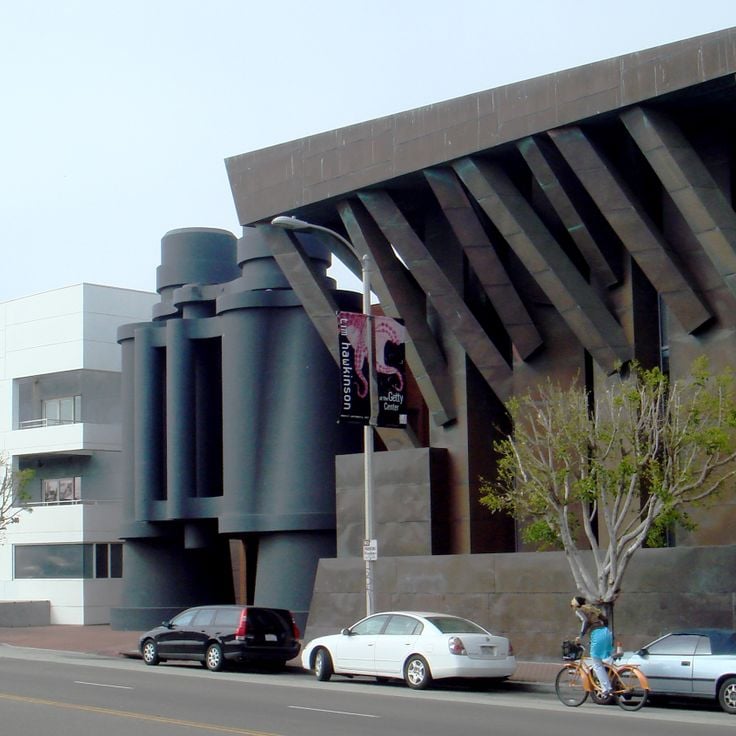
California, USA
The Chiat/Day Building in Venice, Los Angeles, was completed in 1991 as an advertising agency headquarters. The facade displays a three-story concrete binocular sculpture designed by Claes Oldenburg and Coosje van Bruggen. This central sculpture forms the main entrance and connects two distinct office towers. The north tower features a smooth white surface, while the south tower is clad in copper-colored metal panels. The building now serves as an office complex and demonstrates Gehry's postmodern approach with playful elements and contrasting materials.
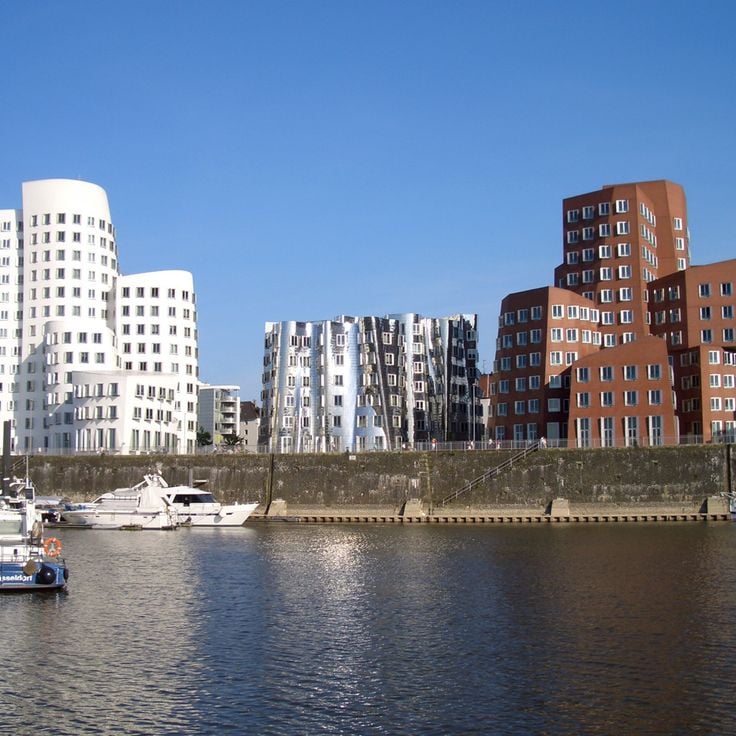
Düsseldorf, Germany
Der Neue Zollhof is an architectural ensemble of three buildings located on the Rhine riverfront in Düsseldorf's Media Harbour district. The structures are characterized by their curved facades, with each building featuring a different material: shiny metal, white plaster, and red brick. Frank Gehry designed this complex in the 1990s as part of the revitalization of the former harbour area. The three towers stand side by side and create contrast through their different surfaces and forms.
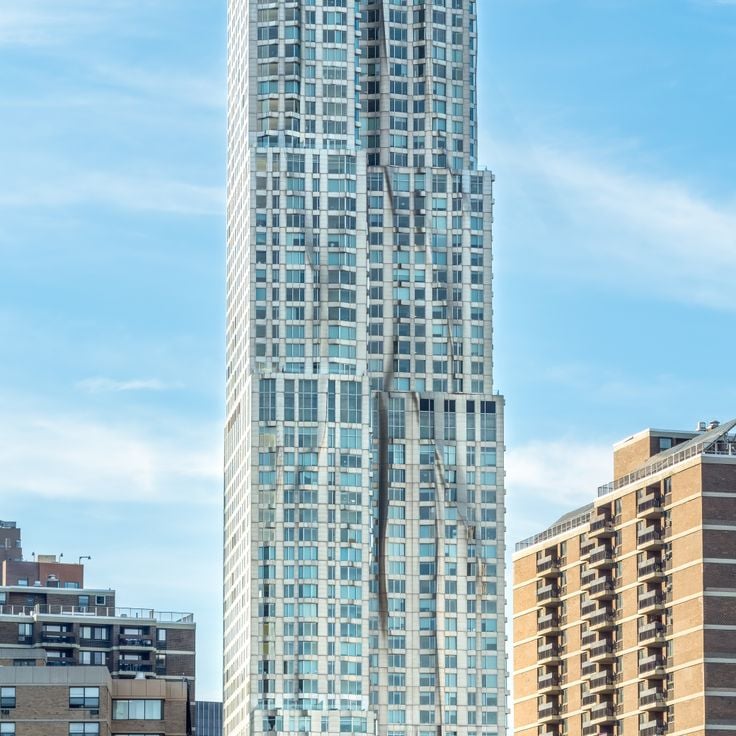
New York City, USA
8 Spruce Street is a residential skyscraper in Lower Manhattan characterized by its undulating stainless steel facade. The geometrically folded exterior creates varying light reflections depending on the time of day and sun position. The building reaches a height of 265 meters and ranks among New York's tallest residential towers. The distinctive facade design gives the structure a sculptural quality within the cityscape.
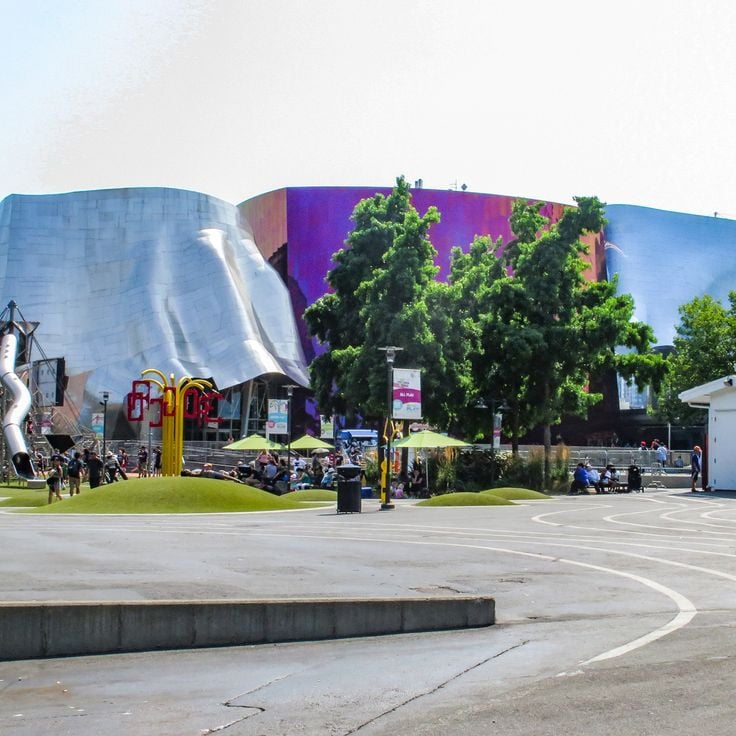
Seattle, USA
The Museum of Pop Culture features a building shell made of curved metal surfaces in red and silver tones. This wave-like architecture creates various exhibition spaces dedicated to music history, science fiction culture and different media forms. The asymmetric construction uses thousands of individually shaped metal panels, making this museum a recognizable part of the city skyline.
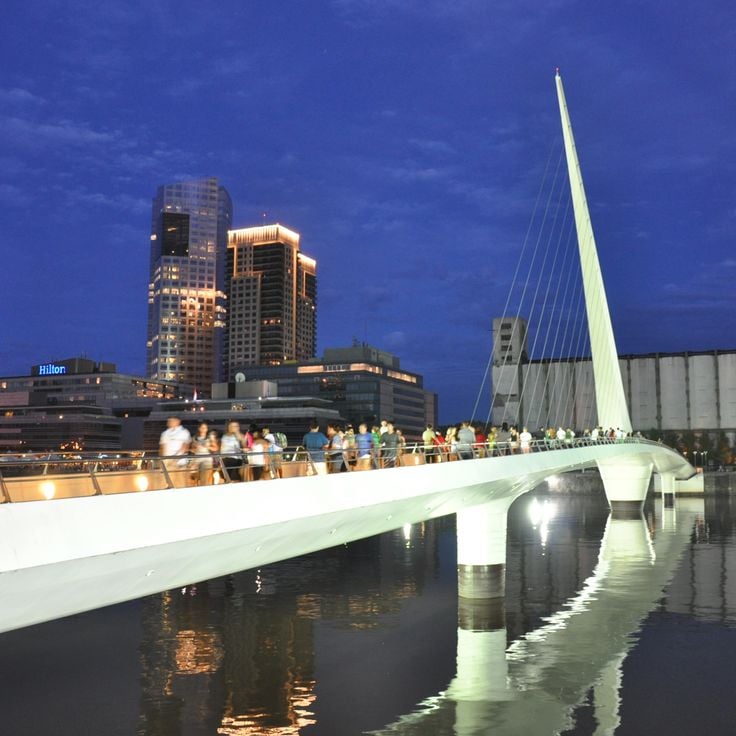
Buenos Aires, Argentina
The Puente de la Mujer is a pedestrian bridge made of white steel located in the Puerto Madero docklands district. The structure features a 39-meter high pylon that tilts over the water. The central section of the bridge rotates to allow ships to pass through the docklands. The design by Spanish architect Santiago Calatrava was completed in 2001.
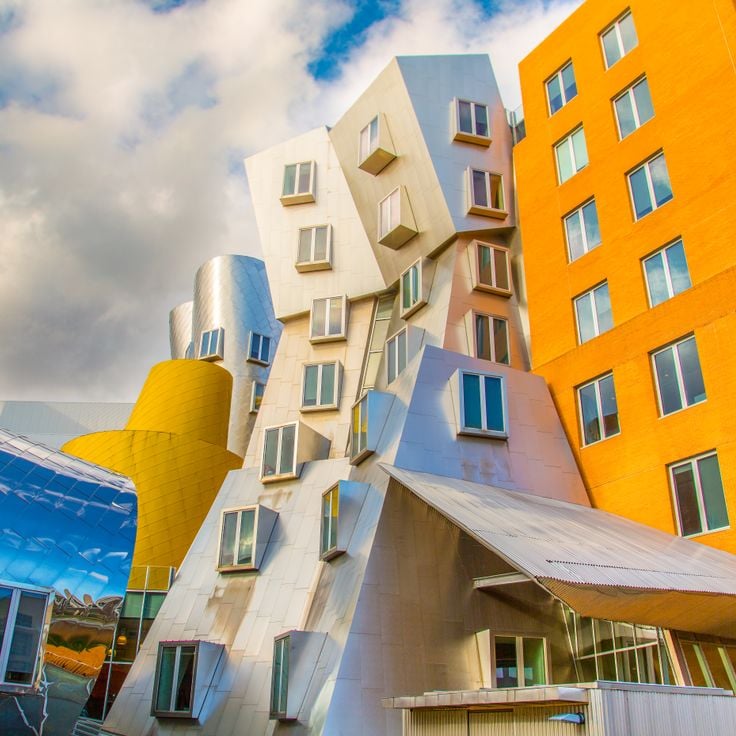
Cambridge, USA
The Stata Center is an academic complex at the Massachusetts Institute of Technology characterized by irregular geometric forms and unconventional angles. Frank Gehry's architecture created spaces for the Computer Science and Artificial Intelligence Laboratory and the Laboratory for Information and Decision Systems. The building combines research laboratories, offices, lecture halls, and common areas within an expressive structure of stainless steel, brick, and colored panels.
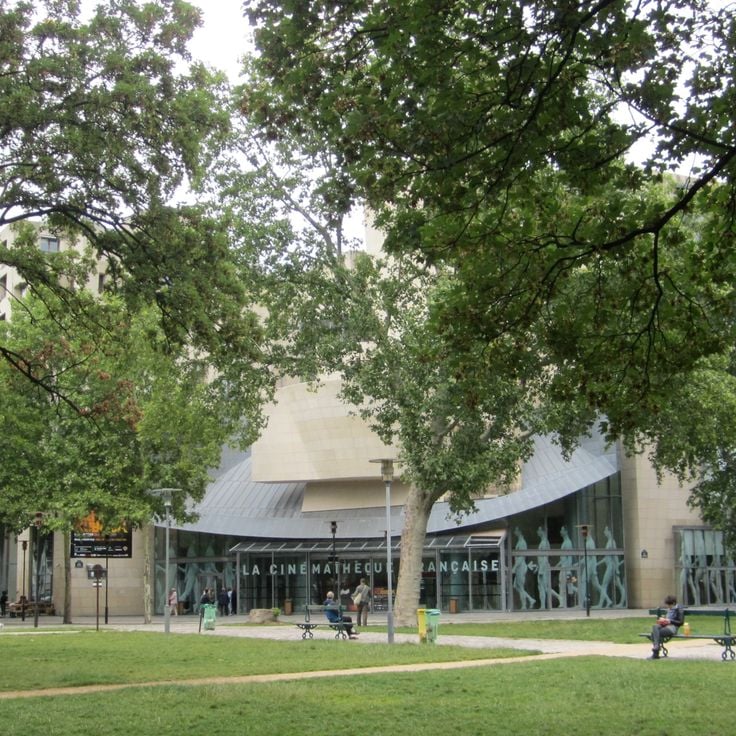
Paris, France
The Cinémathèque Française occupies a cubic building with offset glass surfaces and metal elements designed by Frank Gehry. The institute contains several cinema rooms, extensive film archives and a specialized library dedicated to film history. The facade displays Gehry's characteristic deconstructivist architecture with geometric forms and contrasting materials.